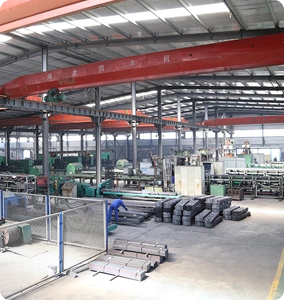Sound Barriers for Outdoor Environments An Effective Solution to Noise Pollution
In urban areas, the rapid expansion of infrastructure and increased vehicular traffic have led to a significant rise in noise pollution. This phenomenon not only affects human health and well-being but also disrupts wildlife and natural ecosystems. As a response to this growing concern, sound barriers have emerged as an effective solution to mitigate outdoor noise levels. This article explores the necessity, benefits, and various types of sound barriers, as well as their applications in outdoor settings.
The Necessity for Sound Barriers
Noise pollution can have detrimental effects on physical and mental health, contributing to stress, sleep disturbances, and cardiovascular problems. Beyond human health, excessive noise can interfere with communication patterns among animals, affecting their mating rituals, feeding behavior, and natural migration. Cities often find themselves in a constant struggle to balance development and environmental sustainability, making the implementation of sound barriers a practical approach to tackle noise issues.
Benefits of Sound Barriers
Sound barriers serve several important purposes. Firstly, they provide a physical obstacle that reduces the transmission of sound waves. Depending on their design, materials, and height, these barriers can attenuate sound levels by up to 10 decibels or more. This reduction is significant, as even a 3-decibel decrease can make a noticeable difference in noise perception.
Secondly, sound barriers can enhance the quality of life for residents living near busy roads, railways, or industrial zones. By creating a quieter outdoor environment, these structures allow for more enjoyable recreational spaces, such as parks and playgrounds. Children can play safely, and families can gather without the constant intrusion of noise pollution.
Moreover, sound barriers can also provide a sense of privacy and security. In densely populated areas, people are often concerned about both noise and the lack of personal space. By erecting sound barriers, property lines can feel more defined, and outdoor spaces can become sanctuaries of calm amid urban chaos.
Types of Sound Barriers
There are various designs and materials used to construct sound barriers, each with its advantages and disadvantages. Common materials include concrete, wood, metal, and even earth mounds or berms.
sound barriers for outdoors

1. Concrete Barriers Known for their durability and high sound attenuation properties, concrete walls are a popular choice. They are often used in highway projects due to their ability to withstand harsh weather conditions.
2. Wooden Barriers While typically less effective than concrete, wooden fences can add aesthetic value to outdoor spaces. They are often used in residential areas due to their natural appearance and versatility.
3. Metal Barriers These barriers can be designed to be both functional and visually appealing. While offering decent sound reduction, they may also be treated with reflective surfaces to enhance their performance.
4. Earth Mounds (Berms) These are natural sound barriers constructed from earth. They not only reduce noise levels but can also enhance biodiversity by providing habitats for local wildlife.
5. Green Barriers An innovative approach involves using plants and trees to create sound barriers. This method improves air quality, promotes biodiversity, and offers aesthetic benefits while effectively reducing noise.
Applications and Future Considerations
Sound barriers are widely used in various settings, including highways, railways, airports, and near industrial areas. The effectiveness of these barriers often depends on their height, distance from the noise source, and the environment in which they are placed.
As cities continue to grow, the importance of sound barriers will only increase. Future designs may focus on integrating technology, such as noise-reducing materials or smart sensors, that can adapt to changing environmental conditions.
Conclusion
Sound barriers are an essential component of modern urban planning, aimed at reducing the detrimental effects of noise pollution. By enhancing the quality of life for residents and protecting local ecosystems, these structures serve as a valuable investment in our outdoor environments. Continued research and innovation in sound barrier design will be vital in creating more sustainable and harmonious living spaces in the future.
-
Why Galvanized Trench Cover Steel Grating Resists Corrosion
NewsJul.10,2025
-
The Versatility and Strength of Stainless Expanded Metal Mesh
NewsJul.10,2025
-
Load Calculations in Steel Grating Platforms
NewsJul.10,2025
-
Keeping Pets and Kids Safe with Chicken Wire Deck Railing
NewsJul.10,2025
-
Hole Diameter and Pitch for Round Perforated Metal Sheets
NewsJul.10,2025
-
Aluminium Diamond Mesh in Modern Architecture
NewsJul.10,2025
Subscribe now!
Stay up to date with the latest on Fry Steeland industry news.

